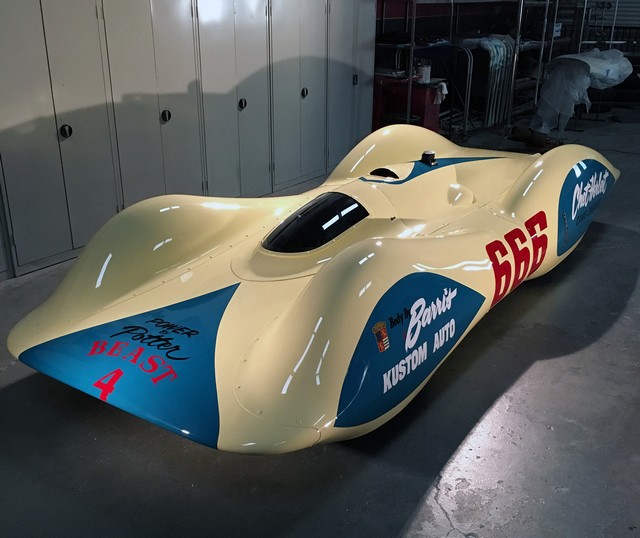MAY 17, 2017
 Wednesday, May 17, 2017 at 08:30AM
Wednesday, May 17, 2017 at 08:30AM

(Chevrolet)
The bad-ass Camaro ZL1 1LE leads the 2018 Camaro lineup. Complete with racing-based suspension and aero technologies, as well as Goodyear Eagle F1 Supercar 3R summer-only tires, the ZL1 1LE represents the most extreme track-focused Camaro to date. If you want to order the new ZL1 1LE Extreme Track Performance Package (order code A1Z), it will cost you an additional $7,500, bringing MSRP of the 2018 ZL1 1LE to $69,995, which includes the $995 destination freight charge. What do you get? Unique aero features include a carbon fiber rear wing, specific air deflectors and dive planes on the front fascia; Racing-derived, lightweight Multimatic DSSV® (Dynamic Suspension Spool Valve) dampers front and rear plus other suspension tweaks; trick wheels and tires; lighter weight and, of course, the monster 650HP, supercharged LT4 engine coupled to a six-speed manual gearbox featuring Active Rev Match. Brembo brakes are also included, along with dual-zone automatic climate control, Bose premium audio system, heated/ventilated front seats and heated steering wheel. As for the regular 2018 Camaro lineup, the car comes in LS, LT, SS and ZL1 models, which are available in coupe and convertible body styles. The performance-oriented 1LE package is offered on LS, LT, SS and ZL1 coupes, with track-focused content specific to each model. In addition, on SS models the 1LE package is now available with the up level 2SS trim (late availability). The Redline Edition package returns for 2018 (wait a minute, don't you think there are too many variations of the Camaro at this point? -WG), which includes black front and rear bowtie emblems, red-accented grille, hash mark graphic, decklid blackout graphic, dark-finish taillamps, black outside mirrors, 20-inch black aluminum wheels with red accents and more. It is available on LS, LT and SS models. The 2018 Camaro lineup goes on sale this summer.
 (BMW)
(BMW)
BMW is making a big hairy deal about its new M5 that's coming this year. Why? Not only is it "the most exciting and emotionally enthralling high-performance sedan from this model range ever released by BMW M," according to BMW's PR minions, the sixth generation of this machine will be launched complete with the M xDrive system, whose all-wheel-drive technology "enables the business sedan’s dynamic prowess to be experienced in even greater depth." We'll see about that. In the meantime, what does it do? The M xDrive system is a rear-biased set-up and only brings the front wheels into play when the rear wheels aren’t able to transmit any more power to the road and additional traction is required. The driver can choose from five different configurations based on combinations of the DSC modes (DSC on, MDM, DSC off) and M xDrive modes (4WD, 4WD Sport, 2WD). Purists can opt for classical rear-wheel drive by completely deactivating the all-wheel-drive system. Editor-In-Chief's Note: Having your cake and eating it too sounds wonderful, but this system doesn't deactivate the weight that comes with it, or the complication. Just sayin'. -PMD

(BMW)
The Mille Miglia was the toughest - and most dangerous - endurance race in the world for three decades. Since 1988, it has been held as a "reliability and regularity" race for historic automobiles. It is a veritable feast for classic fans who jam the 1000-mile route through Northern Italy in large numbers. Around 450 historic sports cars will take part in this year’s event. This year, BMW Group Classic is sending six automobiles from its collection to line up at the start in Brescia, including a BMW 328 Berlin-Rome Touring Roadster built in 1937 and a BMW 328 Mille Miglia Roadster from 1939. The first appearance of the 328 roadster –
which debuted at the Eifel Race in 1936 – at the Mille Miglia ended in 1938 with a win in the class for vehicles with maximum capacity of 2.0-liters. Two years later, Fritz Huschke von Hanstein and Walter Bäumer secured an overall win driving their BMW 328 Mille Miglia Touring Coupé. Three other BMW 328 machines crossed the finishing line in third, fifth and sixth place that year, securing the team award for BMW.

(PPG)
Editor-In-Chief's Note: Thanks to PPG for the following on the "Beast." -PMD
The restoration of the 1953 Beast IV Streamliner was commissioned by, and in collaboration with, the Wally Parks NHRA Motorsports Museum presented by the Automobile Club of Southern California in Pomona. The major restoration to return the low-slung vintage racer to glory was undertaken by Dan Webb and Ashley and Cory Taulbert at Webb Automotive Art, in Grand Blanc, Michigan. Webb entrusted elite custom car painter Darryl Hollenbeck and his crew at Vintage Color Studio, Concord, California, to create the radiant period-correct finish.
While the build of Beast IV took a quick three weeks, the restoration required fifteen months of intense research and meticulous craftsmanship. Much of the racer had deteriorated and few of its original parts remained. With museum curator Greg Sharp providing historical guidance on the project, the Webb and Hollenbeck crews worked primarily from vintage photographs and magazine articles to source rare parts, fabricate components and determine and reproduce the Beast’s exact colors. Craig Naff, of Woodstock, Va., blended the Beast’s remaining original sheet metal with new material to create a complete body; in effect, a canvas for Hollenbeck to paint. Consulting with PPG’s segment manager Steve Lehner and technical trainer Jim Kvatek, Hollenbeck and team members Darrell Schneider and Dennis Sayers selected several PPG automotive refinish products to replicate the car’s initial paint job. Eric Reyes’ steady hand provided the Beast’s elegant lettering and detailing.
“Color was a challenge,” said Hollenbeck. “There were color photos of the original Beast and we knew the car was blue and yellow, but the colors looked different in every photograph. So we compared the colors of other cars in photos with the Beast. We figured out the other cars’ colors and were able to come very close to equaling the Beast’s color. Then we generated dozens of blue and yellow samples and tweaked them to match the paint. The museum made the final decision and we gave the Beast its proper design and color scheme.”
According to Larry Fisher, the museum’s executive director, Beast IV was originally built in 1953 by Chet Herbert just in time to compete in that year’s Bonneville Speed Week and International Speed Trials. The aluminum-bodied, Chrysler Hemi-powered racer streaked across the Utah Salt Flats hitting a top speed of 246 mph and breaking eight long-standing performance records. Beast IV — the successor to Herbert’s original Beast (a motorcycle), Beast II and Beast III racers — ran until 1992 in a number of configurations with a variety of engines and reached speeds up to 289 mph. The racer then rested on its laurels; unused, it fell into disrepair and was acquired by David and Marianne Duthu. The couple donated Beast IV to the museum and agreed to fund the car’s badly needed restoration.
Beast IV is now on permanent display with Beast III at the NHRA Motorsports Museum.




